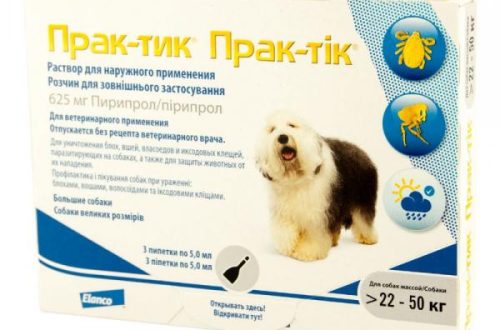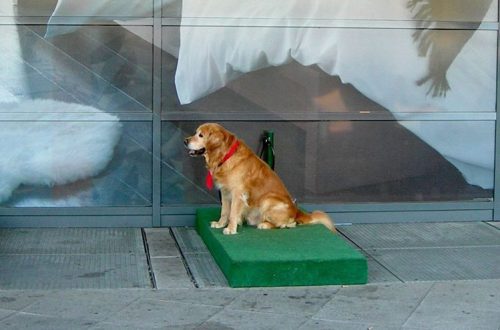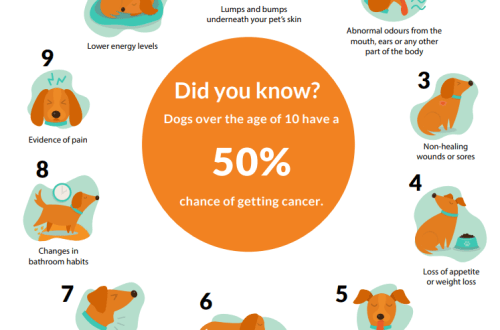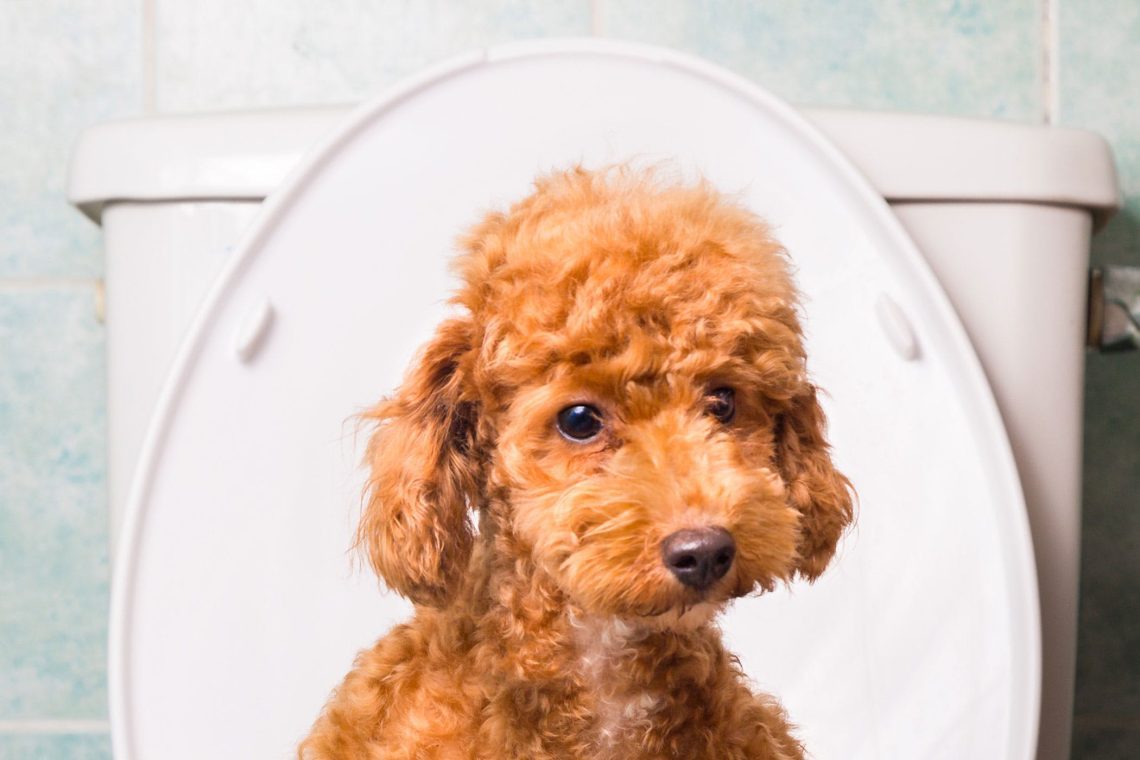
Rotavirus in dogs: symptoms and treatment
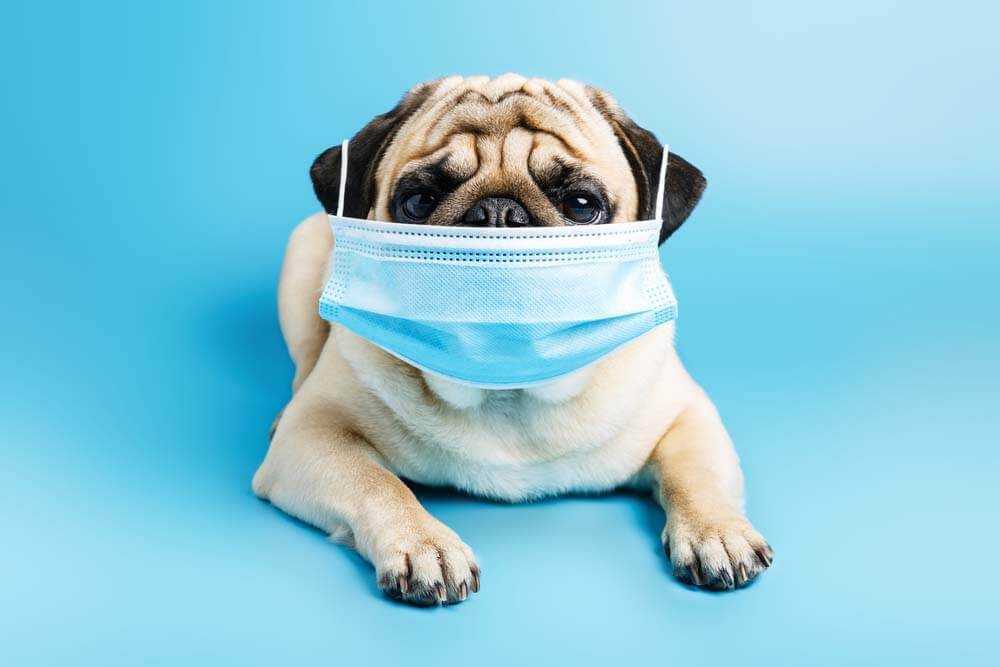
Contents
Causes of rotavirus infection in dogs
Currently, several varieties of rotaviruses are distinguished, which belong to a separate genus of the Reoviridae family. Among them, the most dangerous enteric pathogens in many animal species and in humans are group A pathogens.
The source of infection are sick animals, as well as humans. Rotavirus enteritis dogs are infected by the fecal-oral route, that is, by contact with feces from a sick pet or through surfaces and household items – dog ammunition, bedding, bowls contaminated with these feces.
Rotaviruses infect and damage cells in the lining of the small intestine, leading to inflammation, malabsorption of nutrients, and mild to moderate diarrhea. Dogs with an immature or weak immune system are most at risk of infection – these are puppies, elderly animals, as well as those individuals that live in conditions of crowding, excessive stress.
Despite the species specificity of the virus, it is able to mutate easily, becoming dangerous for various animal species, and also persists in the environment for a long time.
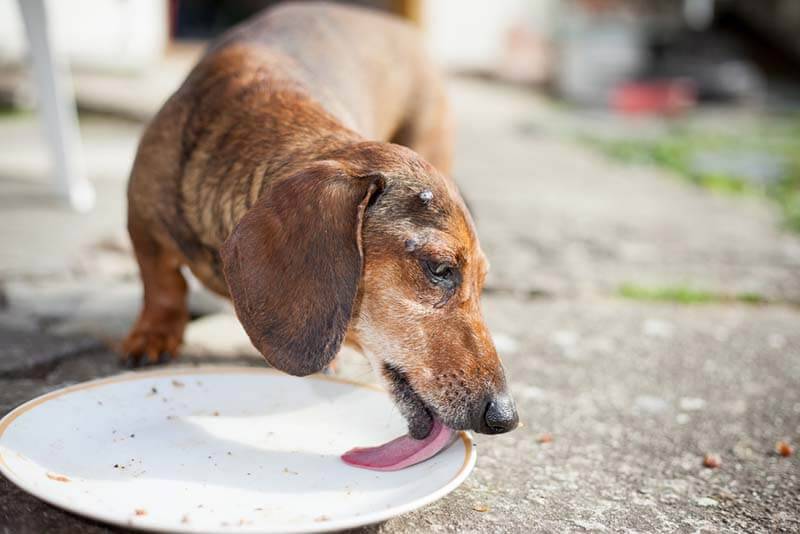
Symptoms of Rotavirus in Dogs
From the moment of infection to the onset of the first symptoms of rotavirus enteritis in dogs, it usually takes from 1 to 5 days.
At the onset of the disease, one of the first to appear are signs of a gastrointestinal disorder – most often watery diarrhea of mild or moderate severity, and in some cases there is mucus in the feces, vomiting, pain in the abdomen. The described symptoms can occur both individually and in combination.
Subsequently, if timely assistance has not been provided or there are complications from other infections, dehydration, sudden weight loss, decreased appetite, or anorexia may occur. Affected dogs become lethargic, get tired quickly, and have a fever.
It is important to note that the symptoms of rotavirus are non-specific.
That is, they can be observed in many other viral and bacterial infections of the gastrointestinal tract, including intestinal parasitosis.
In adult dogs, rotavirus is either asymptomatic or mild with spontaneous recovery and is rarely fatal.
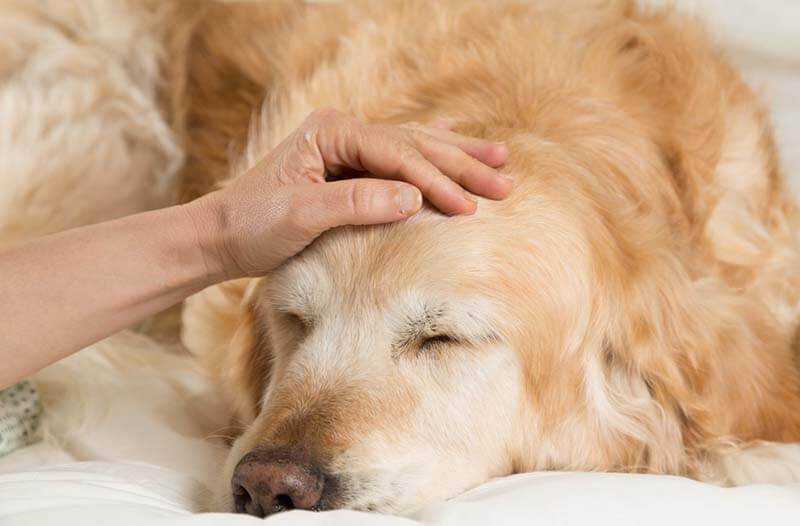
Diagnosis of rotavirus enteritis in dogs
Since the symptoms of rotavirus are uncharacteristic, it is impossible to make a diagnosis based on clinical signs alone. In addition to taking a detailed history and physical examination (done to make a diagnosis), the animal will require laboratory diagnostics.
The most accessible and used method for confirming rotavirus infection in dogs is the polymerase chain reaction (PCR). Its essence is that parts of the genetic material of the pathogen are found in the feces of a sick animal. To conduct the study, it is only necessary to select material from the mucous membrane of the rectum by scraping and send it to a specialized veterinary laboratory.
The patient will also need to exclude other diseases accompanied by similar clinical manifestations, such as parvovirus and coronavirus infections, intestinal parasitosis. After all, with all the above pathologies, it is the gastrointestinal tract that is affected.
Infected animals are shown to have a hematological and biochemical blood test, ultrasound and x-ray of the abdominal cavity to exclude other causes. All this is necessary to assess the severity of the course of the disease and the selection of appropriate therapy.
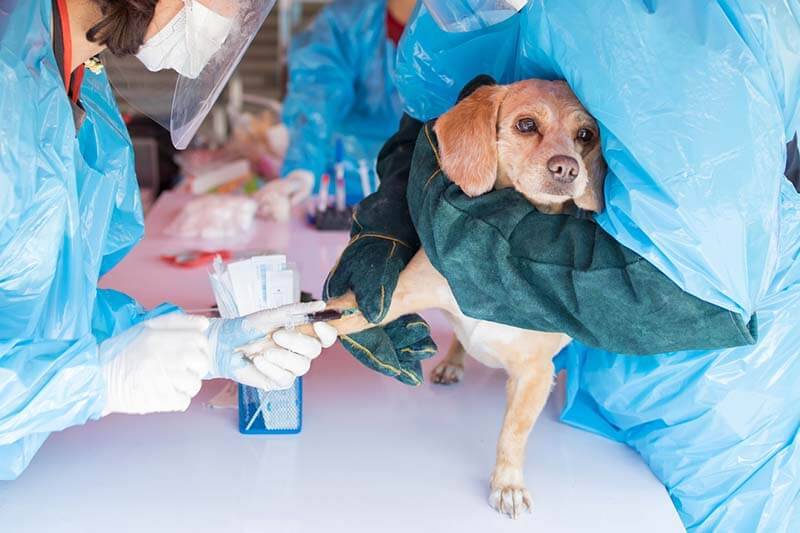
Treatment of rotavirus in dogs
According to worldwide studies, most animals with rotavirus recover with maintenance treatment within 7-10 days. There is no specific treatment for rotavirus infection in dogs. The basis of symptomatic therapy is: relief of diarrhea (for example, with the help of sorbents), stopping vomiting with antiemetics, intravenous infusions (droppers) to correct dehydration and electrolyte imbalance, the use of antipyretics (for example, non-steroidal anti-inflammatory drugs – NSAIDs). Also, a mandatory item is feeding the patient, including through a probe or syringe, using therapeutic diets. But antibiotics for viral infections are usually not prescribed because they do not have any effect on the virus, killing only bacteria.
Unfortunately, rotavirus in dogs is quite common in combination with other infectious or parasitic diseases, which is much more difficult for dogs to tolerate. In cases where there is a bacterial infection or parasitosis, antibacterial and antiparasitic drugs are used.
An extremely dangerous condition is when a dog, and even more so a puppy, refuses to drink or eat on its own. In this case, the most correct decision would be to hospitalize the pet in a veterinary clinic, so that he could be constantly monitored, and also fed through an esophageal tube. This is especially important for puppies of small breeds, such as Yorkshire terriers, toy terriers, Pomeranians, because of the risk of developing hypoglycemia, that is, low blood glucose levels.
The described complications in dogs are mainly manifested precisely during the association (association) of rotavirus infection with others and can only be cured in a veterinary clinic.
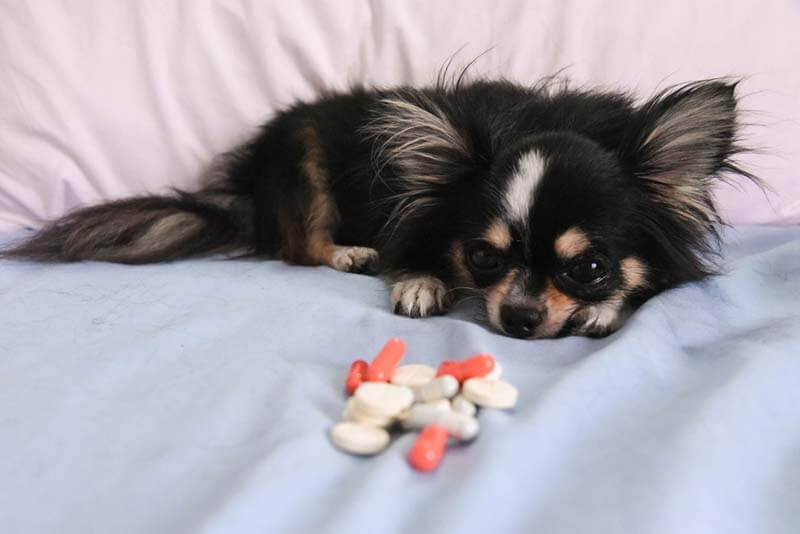
First aid
If dogs develop symptoms of rotavirus in the form of vomiting, diarrhea or decreased appetite, especially in young animals, it is necessary to immediately contact a veterinary clinic to clarify the causes of this condition. You should not self-medicate, because at best it will be a waste of time, and at worst it will have a bad effect on your pet’s condition. An examination by a veterinarian will help identify life-threatening symptoms and more or less predict the course of the disease.
Pet Care
If the condition of the pet allows, and the treatment takes place on an outpatient basis, then it is necessary to be vigilant, and in the event of any deterioration in the condition, obtain additional advice from the attending physician. It is necessary to strictly follow all the recommendations of the veterinarian without introducing too much.
Dogs with rotavirus infection require plenty of rest, free access to clean water, and a balanced diet. If the pet refuses to eat ready-made, industrial diet food, then you should contact a veterinary nutritionist to compile a natural diet that meets the needs of the sick organism. Therapeutic feeding can be left to the animal for some time after recovery.
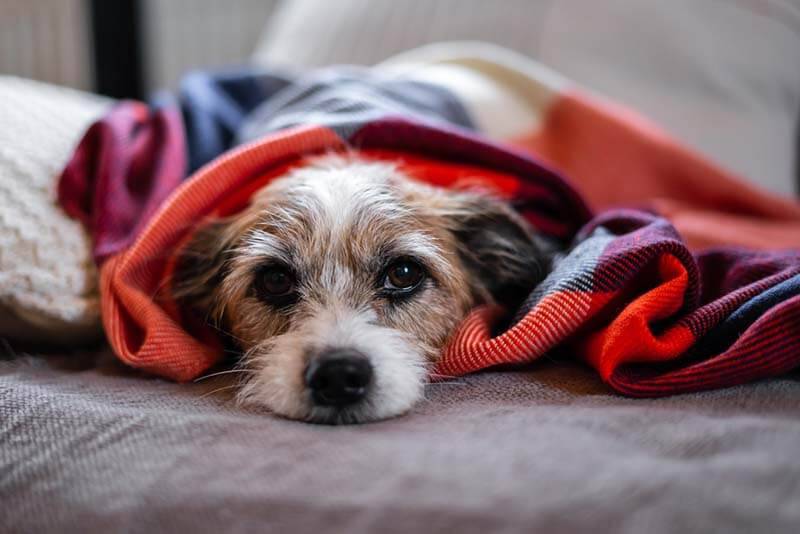
Prevention
If there are healthy and sick animals in the same apartment, then the latter should be separated from others to avoid the spread of the virus. The area where infected pets are kept must be thoroughly cleaned and disinfected. Owners should wear protective rubber gloves when handling any faecal material.
Unfortunately, there is no vaccine against rotavirus infection in dogs.
Your pet’s health is:
Good nutrition;
The presence in the diet of a full complex of vitamins and minerals;
Walks in the open air.
Timely vaccination and deworming are far from the last importance in the prevention of severe rotavirus infection in dogs, as they help prevent multi-infection (a complication after illness).
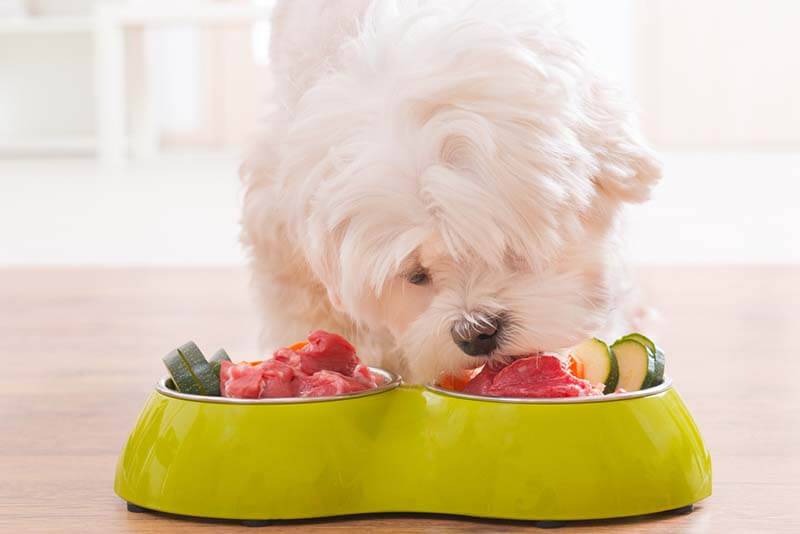
Danger to humans
As mentioned earlier, rotavirus, both in dogs and other animals, can easily mutate. Therefore, it is very important that pet owners keep infected dogs away from small children and infants. There is information about the detection of canine strains of the virus in children, which in some cases were asymptomatic, while in others they were manifested by enteritis. Compliance with the rules of personal hygiene and sanitation significantly reduces the risk of infection.
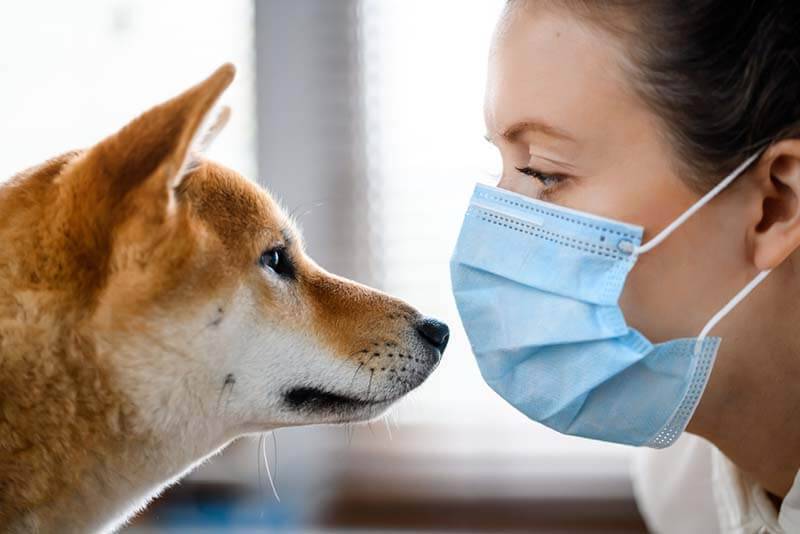
Rotavirus Infection in Dogs: Essentials
Puppies, dogs with a weakened immune system, and elderly animals are mainly susceptible to the disease.
Infection occurs by the fecal-oral route through contact with feces or contaminated household items.
Canine rotavirus is a zoonotic disease, meaning it can affect humans. Therefore, protective gloves should be worn when cleaning or handling any faecal material from sick animals, and good personal hygiene should be observed.
The main symptoms in dogs are damage to the gastrointestinal tract: diarrhea, vomiting, decreased appetite.
Rotavirus often occurs in combination with other infectious or parasitic diseases (such as parvovirus, coronavirus, etc.).
Sick animals are isolated, and living quarters are thoroughly cleaned and disinfected.
There is no vaccine for rotavirus in dogs.
Answers to frequently asked questions
Sources:
Edited by petcoach. Rotavirus in Dogs. https://www.petcoach.co/dog/condition/rotavirus/.
Greene C.E. Infectious dieseases of the dog and cat, fourth edition, 2012.
Intestinal Viral Infection (Rotavirus) in Dogs, 2009. https://www.petmd.com/dog/conditions/digestive/c_dg_rotavirus_infections.
Hollinger H.What is Intestinal Viral Infection (Rotavirus)?, 2021. https://wagwalking.com/condition/intestinal-viral-infection-rotavirus.
Gabbay Y.B., Homem V. S.F., Munford V., Alves A.S., Mascarenhas J. D.P., Linhares A. C., Rácz M.L. Detection of rotavirus in dogs with diarrhea in Brazil //Brazilian Journal Microbiology, 2003. https://www.scielo.br/j/bjm/a/J4NF4dxP4ddkp73LTMbP3JF/?lang=en
Laurent A. Can Dogs Get Rotavirus?? 2020. https://www.animalwised.com/can-dogs-get-rotavirus-3405.html
Ortega A.F., Martínez-Castañeda J.S., Bautista-Gómez L.G., Muñoz R.F, Hernández I.Q. Identification of co-infection by rotavirus and parvovirus in dogs with gastroenteritis in Mexico // Brazilian Journal Microbiology, 2017. https://www.ncbi.nlm.nih.gov/pmc/articles/PMC5628314/
April 5 2022
Updated: April 19, 2022



